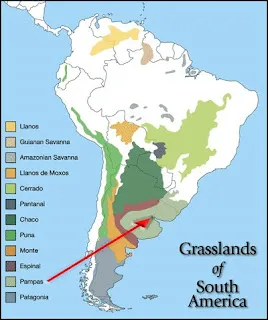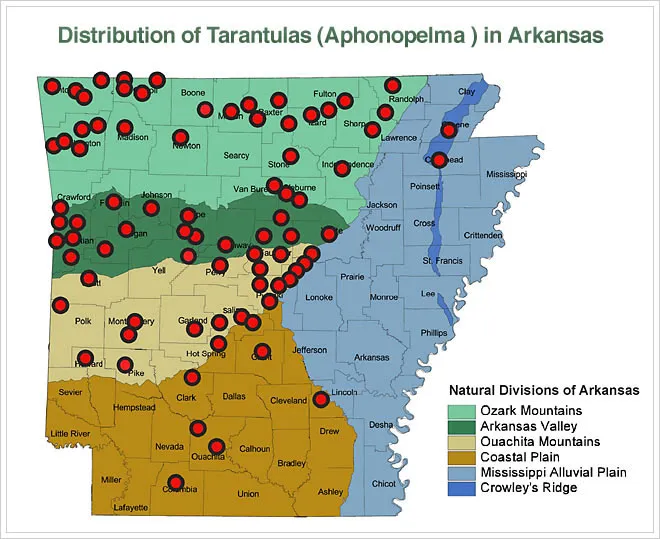What is Tarantula Distribution?
Tarantula distribution refers to the geographic areas where these fascinating arachnids can be found. Understanding this distribution is crucial for appreciating their ecological roles, conservation needs, and the factors influencing their presence in specific locations. It involves mapping where different species live, their population densities, and the environmental conditions that support their survival. This includes studying the climate, habitat, and other species that interact with them, providing a comprehensive view of their ecological niche.
Understanding Tarantula Habitats
Tarantulas, being highly adaptable creatures, inhabit a variety of environments. Their preferred habitats typically include warm climates with moderate humidity, such as deserts, grasslands, and tropical forests. The presence of suitable burrows or hiding places is essential for their survival, providing protection from predators and the elements. The availability of prey, such as insects and small vertebrates, also plays a significant role in determining where tarantulas can thrive. These habitats often have specific soil types that facilitate burrowing and provide suitable temperature gradients necessary for their lifecycle. Understanding these habitat preferences is key to comprehending their distribution across the United States.
Factors Affecting Tarantula Distribution

Several factors influence the distribution of tarantulas. Climate, including temperature and rainfall, is a primary determinant, as tarantulas require specific conditions for survival and reproduction. The availability of suitable habitats, such as undisturbed land with appropriate soil for burrowing, is also crucial. Furthermore, the presence of prey, such as insects, other invertebrates, and even small vertebrates, is essential for their survival. Human activities, including habitat destruction and climate change, pose significant threats, altering their distribution patterns and impacting their populations. Invasive species can also compete with tarantulas for resources, further affecting their range.
Top 5 Facts about Tarantula Distribution in the US
Fact 1 Geographical Range of US Tarantulas
Tarantulas in the United States are primarily found in the southwestern and southern regions, where warm climates and suitable habitats exist. This range includes states like Arizona, New Mexico, Texas, and California, with some species extending into parts of Oklahoma, Arkansas, and Florida. Different species have distinct geographic distributions within these areas, often reflecting variations in habitat preferences and climate tolerances. The geographical range is influenced by factors such as the availability of prey, the presence of suitable burrowing locations, and the ability to withstand environmental challenges.
Different Species and Distribution

The United States is home to a diverse array of tarantula species, each with its unique distribution patterns. For instance, the Arizona blonde tarantula is predominantly found in Arizona, while the Texas tan tarantula is, as the name suggests, common in Texas. Some species, like the Oklahoma brown tarantula, have broader ranges, extending across multiple states. Understanding these species-specific distributions is essential for conservation efforts, as each species faces unique threats and requires tailored protection strategies. The distribution also varies based on specific habitat requirements, influencing their presence within broader geographical areas.
Fact 2 US Climate and Tarantula Habitats
The climate in the United States plays a pivotal role in shaping tarantula habitats. Warm temperatures, moderate humidity, and distinct wet and dry seasons are ideal for their survival and reproduction. The southwestern states, with their desert and semi-arid climates, provide favorable conditions for many tarantula species. These areas offer ample opportunities for burrowing, protection from predators, and access to prey. Variations in local climates, such as microclimates within canyons or hillsides, also influence the distribution, creating pockets of suitable habitats even in less favorable regions.
How Climate Affects Tarantula Populations
Climate change and extreme weather events significantly impact tarantula populations. Rising temperatures, altered precipitation patterns, and increased frequency of droughts can reduce the availability of prey and make habitats less hospitable. Prolonged periods of extreme heat can force tarantulas to seek deeper burrows or become less active, impacting their foraging and reproductive success. These climatic changes can lead to shifts in the distribution, with some species expanding their range, while others face population declines or localized extinctions. Understanding these climate-related threats is crucial for effective conservation planning.
Fact 3 Regions with High Tarantula Density

Certain regions in the United States boast higher densities of tarantula populations due to favorable environmental conditions. The Sonoran Desert in Arizona and the Chihuahuan Desert in New Mexico and Texas are prime examples, supporting diverse tarantula species. These areas offer a combination of suitable climate, varied habitats, and abundant prey, creating ideal environments for tarantulas to thrive. Protected areas like national parks and wildlife refuges also contribute to higher densities by minimizing human disturbance and preserving critical habitats. Observing these areas can provide a greater chance to encounter diverse species in their natural habitat.
Specific States and Habitats
Each state offers unique habitats supporting different tarantula species. In Arizona, the Arizona blonde tarantula thrives in the deserts, while in Texas, the Texas tan tarantula is common in grasslands and scrublands. California hosts various species, including the California ebony tarantula, often found in oak woodlands and chaparral habitats. Understanding these habitat-specific preferences is critical for conservation efforts. Identifying these areas and implementing protection strategies can preserve and maintain the diversity of tarantula species within the United States.
Fact 4 Threats to Tarantula Distribution
Tarantula distribution faces several threats. Habitat loss due to urbanization, agriculture, and deforestation is a major concern, reducing the availability of suitable areas for burrowing and foraging. Climate change, leading to extreme weather events and altered environmental conditions, poses another significant challenge. The pet trade, though regulated, can impact wild populations if not managed sustainably. Pesticide use and other forms of pollution also affect tarantulas, impacting their prey base and overall health. These threats are often interconnected, exacerbating the challenges faced by these arachnids.
Habitat Loss and Human Impact

Human activities significantly impact tarantula habitats. Urban sprawl and agricultural expansion destroy or fragment habitats, isolating populations and making them more vulnerable. Deforestation and overgrazing can lead to soil erosion, altering the soil composition and making it unsuitable for burrowing. Human-induced wildfires, often caused by accidental ignitions, also destroy vegetation and negatively affect tarantula populations. Sustainable land-use practices, such as preserving natural areas and reducing the impact of human activities, are essential to mitigate these threats.
Fact 5 Conservation Efforts and the Future of Tarantulas
Various conservation efforts are underway to protect tarantulas and their habitats. These include habitat preservation and restoration projects, aimed at creating and maintaining suitable environments. Protected areas, such as national parks and wildlife refuges, provide safe havens for tarantulas, minimizing human disturbance and ensuring the availability of prey. Research and monitoring programs help assess population trends and identify threats, informing conservation strategies. Public awareness campaigns play a crucial role in educating people about the importance of tarantulas and the need for their conservation.
Conservation Initiatives and Their Impact
Conservation initiatives have a significant impact on the future of tarantulas. Habitat restoration projects, such as re-vegetation efforts and the creation of artificial burrows, can help increase habitat availability. Establishing and managing protected areas provide safe environments for tarantulas and reduce the impact of human activities. Public education programs, including outreach activities and educational materials, raise awareness about the importance of tarantulas and inspire conservation efforts. By working together, we can ensure the survival of these fascinating creatures for generations to come.
Conclusion

Understanding tarantula distribution in the United States is essential for appreciating their ecological roles and ensuring their conservation. From the factors influencing their habitats to the threats they face, it is critical to acknowledge their existence and their beauty. By implementing conservation efforts and raising awareness, we can protect these incredible creatures and their ecosystems. Continued research, habitat preservation, and community involvement are crucial for safeguarding tarantulas and ensuring their survival for future generations. Therefore, by recognizing the importance of tarantulas, we are not only protecting a species but also contributing to the preservation of our planet’s biodiversity.
